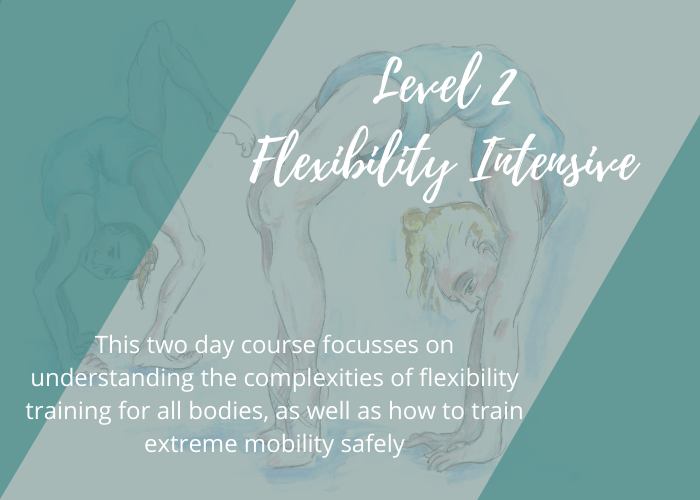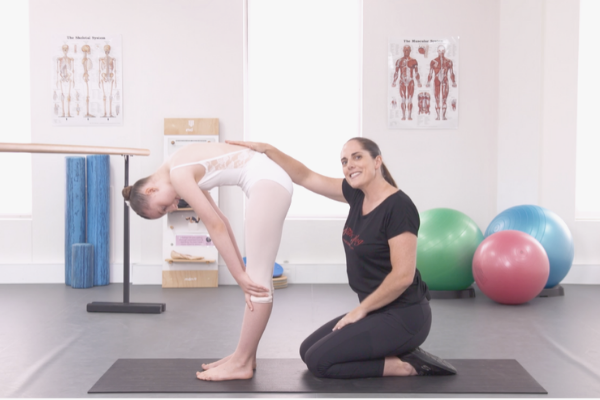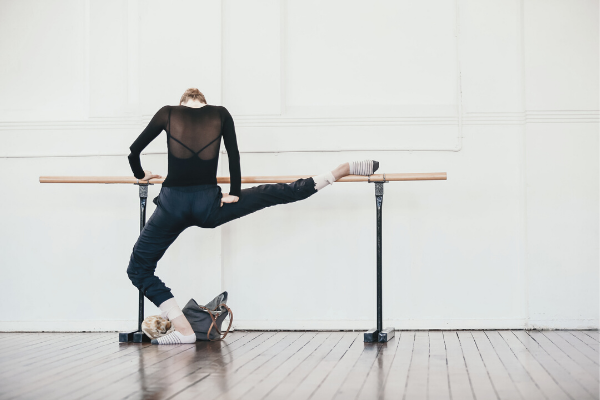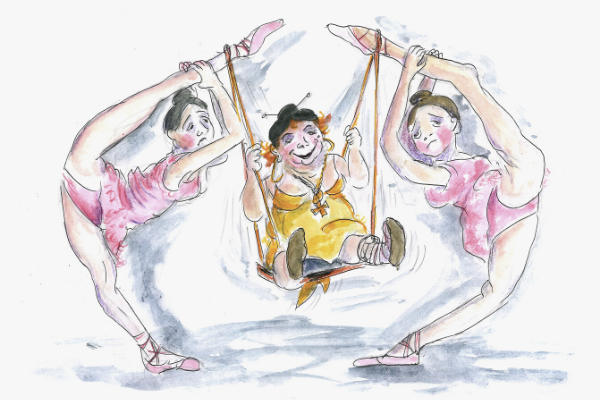- Free Articles
- Shop
- Workshops
- The Dance Educator Series
- Upcoming Workshops
- Workshop FAQ’s
- Host Application Form
- Student Workshop Application Form
- Dance Teacher & Health Professional Directory
- Workshop Testimonials
- Members Areas
- Cart
- My Account
How Can I Get More Flexible?
Dancers all over the world are constantly asking questions such as…
- “How can I get more flexible?”
- “How do I get into the splits?”
- “What are the best ways to stretch?”
There are so many myths in the dance world (as well as in Martial Arts, Gymnastics and any other sport that desires flexibility) about how to get more flexible, however many of these can actually be very dangerous.
Pushing into stretches, over stretching, PNF Stretching, Ballistic stretching and Partner Stretching all carry risks of tearing muscles and damaging ligaments. We now know that traditional stretching methods are the slowest and most inefficient way of getting more flexible.
To help you understand this in more detail I have teamed up with MDM Dancewear to create a video about the intricacies of getting more flexible.
Therapists such as Osteopaths, Chiropractors and Physiotherapists, as well as Massage Therapists and Myofascial therapists use many different techniques to enhance mobility and flexibility that have very little to do with stretching the muscle. Learning subtle ways of releasing certain trigger points yourself can have profound and dramatic results, without the risk of hurting yourself! My Fronts Splits Fast program is all about learning how to do these kinds of techniques on yourself!
Working smarter, not harder, is the key to unlocking your maximum range. Addressing all of thecomponents that influence flexibility; the breath, the nerves, the fascia and lastly the muscles is the best possible way for you to determine where you restrictions are.
Want to learn more about flexibility?
Flexibility Intensive for Teachers and Health Professionals
My intensive teacher training workshops are packed full of information that will help you assess flexibility and implement a sound program that will help dancers unlock their true mobility. The original single day intensive has beeen extended to include a second day focussed on training extreme moibility safely.
Flexibility (or lack thereof) can never be fully contributed to muscle tension and must be looked at more comprehensively to understand the true cause of any restrictions in one’s range of motion. Factors like joint shape or position, neural tension, fascial tension, breath, postural habits and even emotion can all contribute to lack of flexibility in an individual. In this inten sive day workshop, I addresse each of these issues and looks at common cases in individuals and how to effectively treat these issues.
Or If You're A Student Check Out Our Front Splits Fast Program
The Front Splits Fast! Flexibility Program teaches you how to “treat” yourself, and discover your true ranges of mobility. Forget the hours of stretching, only to wake up the next day tighter than the day before. Discover how easy it is to feel free in your own body, and perform to your ultimate potential today!
- The Mind Body Connection - If you can influence the constant message from your brain that is telling your muscle to contract, then you can achieve far greater mobility than by trying to physically stretch that muscle longer.
- Neural Mobility – The nervous system is a continuous web of connective tissue that extends from your brain to the tips of your fingers and toes. If there are any mechanical blockages along its path, then the mobility in any part of your body can be affected.
- Fascial Tension – Many therapist such as Thomas Myers and Ida Rolf have explored the concept of the coverings of our muscles (Fascia) transmitting tension through many other parts of the body. There are several important catchment points that can make an extraordinary difference to your levels of mobility and general feeling of freedom.
The Front Splits Fast! Flexibility Program teaches you how to “treat” yourself, and discover your true ranges of mobility. Forget the hours of stretching, only to wake up the next day tighter than the day before. Discover how easy it is to feel free in your own body, and perform to your ultimate potential today! Available as both an Online Video Course and a Hard Copy from Amazon
Flexibility Resources
If you are looking to delve deeper into this topic, check out the following programs:
- Level Two Online Flexibility Intensive: If you are a dance teacher, this is the perfect continued education course for you. During this course you will understand the multifactorial nature to flexibility training. You will also explore safe ways of assessing exactly where each individual is restricted in order to create the most effective program.
- Level Three Online Flexibility Intensive on 'How to Train Extreme Mobility Safely': This workshop will help you assess your students in detail and be able to offer them effective techniques in a logical clear order to get them on the way to achieving THEIR optimal flexibility. It is also for teachers who are concerned at the extreme positions young dancers are wanting to work into, as it gives you safe guidelines on how to guide their development.









